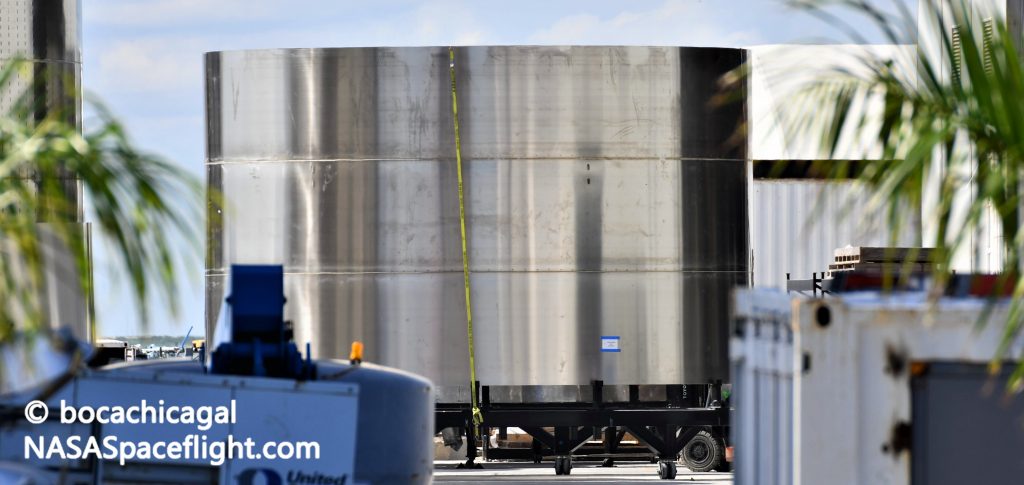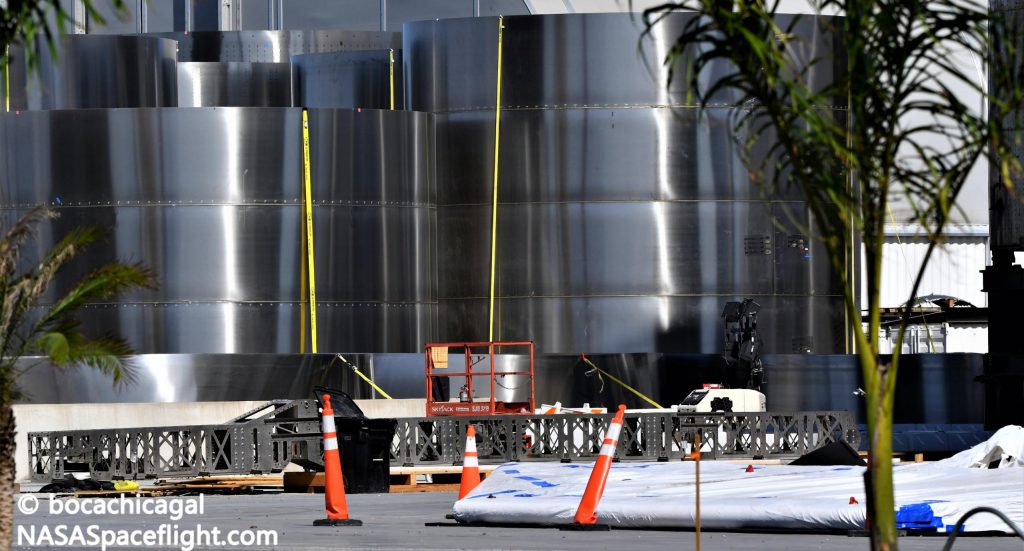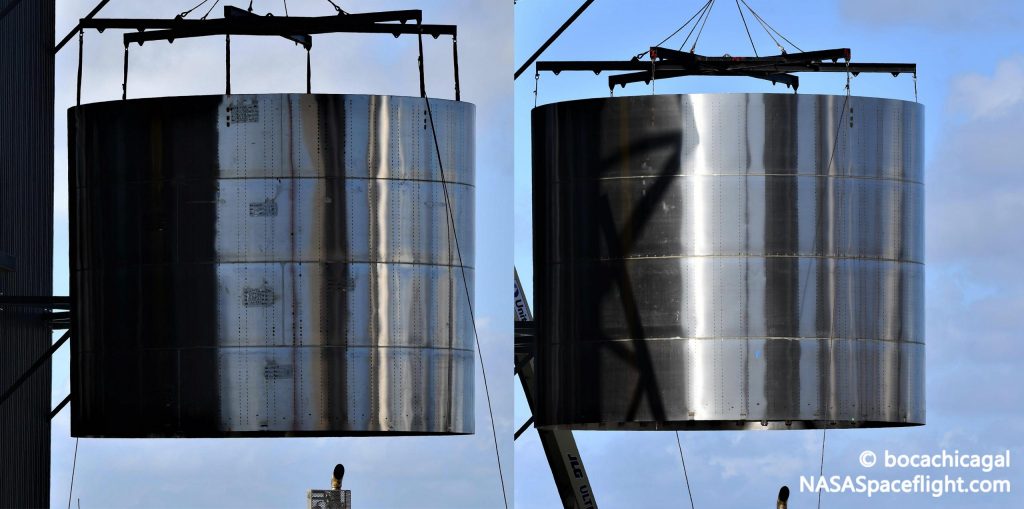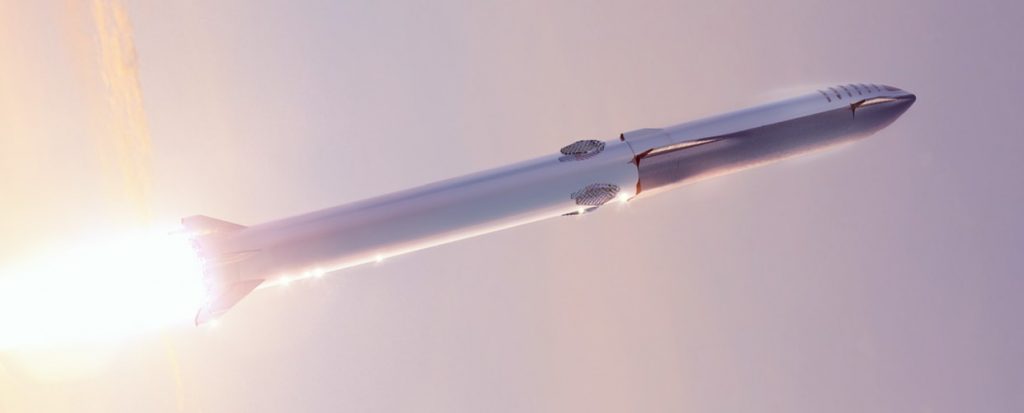SpaceX has taken the first unequivocal step towards orbital Starship launches, kicking off assembly of the first Super Heavy booster (first stage) – a necessity for recoverable spaceship missions to Earth orbit and beyond.
Although SpaceX could technically get away with building much smaller booster prototypes to support Starship’s initial orbital test flights, perhaps going as far as simply modifying Starship’s proven tank design, rocketry really doesn’t lend itself to modularity. Be it out of confidence or necessity, SpaceX appears to be moving directly from Starship prototype development to full-scale Super Heavy booster production and testing.
The first conveniently labeled Super Heavy booster rings were spotted around September 22nd. In the six or so weeks since then, SpaceX’s Boca Chica, Texas factory has relentlessly churned out at least as many sections of stacked booster rings – now strewn about the ever-growing campus. No less than seven labeled Super Heavy ring sections have been spotted since the first, equating to fewer than 25 steel rings of the estimated 38-40 needed to complete each booster.



Relying on a tank design almost identical to hardware flight-proven on two separate Starship prototypes, SpaceX is able to use the exact same manufacturing infrastructure for the vast majority of Starship and Super Heavy. In fact, in a flip of the usual relationship, the next-generation rocket’s booster will most likely be far simpler than the upper stage – nominally the largest reusable spacecraft and upper stage ever attempted.
Without the need for a tiled heat shield, a conical nose section, aerodynamic control surfaces (beyond Falcon-style grid fins), or even (perhaps) internal header tanks, the only major challenge unique to Super Heavy is the development of an engine section capable of supporting and feeding as many as 28 Raptor engines. In other words, as long as the basics of Starship are successful and SpaceX is able to design a reliable 28-Raptor thrust structure and associated plumbing, Super Heavy may actually be a much easier problem to solve.

Theory aside, Starship and Super Heavy will unequivocally be the largest spacecraft, upper stage, and rocket booster ever built regardless of their success. While CEO Elon Musk recently stated that a Super Heavy booster could perform hop tests with just two Raptor engines, if necessary, the rocket is ultimately expected to have 20 high-thrust Raptors with minimal throttle capability and an inner ring of eight throttleable, gimballing engines for precision maneuvers.
With all 28 engines operating at full thrust, that particular Super Heavy design would produce an immense 6600 metric tons (14.5 million lbf) of thrust at liftoff – approximately twice the thrust of Saturn V and Soviet N-1 rockets and more than three times the thrust of SpaceX’s own Falcon Heavy. Measuring ~70m (~230 ft) tall, Super Heavy would weigh at least 3500 metric tons (7.7 million lb) fully loaded with liquid oxygen and methane propellant and – on its own – stand as tall or taller than Falcon 9, Falcon Heavy, and any other operational rocket on Earth.
Now effectively inaugurated with the first Super Heavy booster (“BN1,” according to SpaceX) hardware, the ~83m (~270 ft) tall high bay will likely be in a near-constant state of activity as teams work to stack and weld the massive steel rocket. Essential to support Starship’s first recoverable orbital launch attempts, it remains to be seen how exactly SpaceX will put the first completed Super Heavy through its paces and what the first booster-supported Starship launches will look like. Regardless, barring major surprises during assembly, Super Heavy booster #1 (BN1) could be more or less complete just a month or two from now.

November 09, 2020 at 05:01PM
https://ift.tt/3eD2Nv4
SpaceX begins assembling first Starship Super Heavy booster in South Texas - Teslarati
https://ift.tt/2DVP6sH

No comments:
Post a Comment